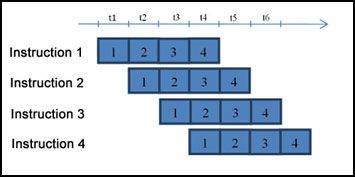GHz is one of the main things a consumer looks at before deciding on a processor to buy and while Intel and AMD have doubled the processing frequency of their processors in last few years and with the current advancements in CPU tech we should have had 10 GHz processors by now but, we haven’t got them and Intel has explained why we don’t have 10 GHz processors in the market.
To put it simply, Heat is the main issue that is stopping us from achieving 10 GHz processing frequency for the processor. The higher the frequency of a processor the more heat will be generated which requires drastic measures to keep the CPU temperature in check.
This is the very reason, overclockers use liquid Nitrogen to keep the CPU temperature within normal range and even then they aren’t able to come close to 10 GHz processing power.
However, aside from the heat, there are some technical limitations too that are holding us back from getting 10 GHz CPUs from Intel and AMD.
In a recent blog post, Intel’s Victoria Zhislina got into some technical details explaining why we don’t have 10 GHz processors from AMD or Intel. According to Zhislina, one of the main limitations is how instruction sets are executed by the processor which takes time to execute each instruction set.
Different stages can vary in execution time. At the same time, different steps of the same instruction are executed during different clock ticks. Clock tick length (and frequency as well) of the processor should fit the longest step.
To put things simply, first look at the above diagram which shows a series of steps broken down according to clock ticks. The first instruction has completed its first step by the time the second instruction starts its first step.
Different steps vary in execution time and “at the same time, different steps of the same instruction are executed during different clock ticks. Clock tick length (and frequency as well) of the processor should fit the longest step”.
Now if the second step of the first instructions set is the longest one and clock tick for it to execute is 500 ps and then we go on and set the clock tick two times shorter, 250 ps and “everything but the frequency remains the same”.
Still, the longest step will take two clock ticks to execute which will again make it 500 ps and eventually nothing is gained and the process becomes a bit more complicated.
In simple words, a faster frequency will speed up the execution of the instruction set but the longest step will still cause the same delay even if the clock tick is reduced. According to Intel, the only way to increase the frequency and have actual gains from it will be by shortening the longest step of the instruction set.
What do you think? Let us know in the comments. You can also check out the full blog post.
